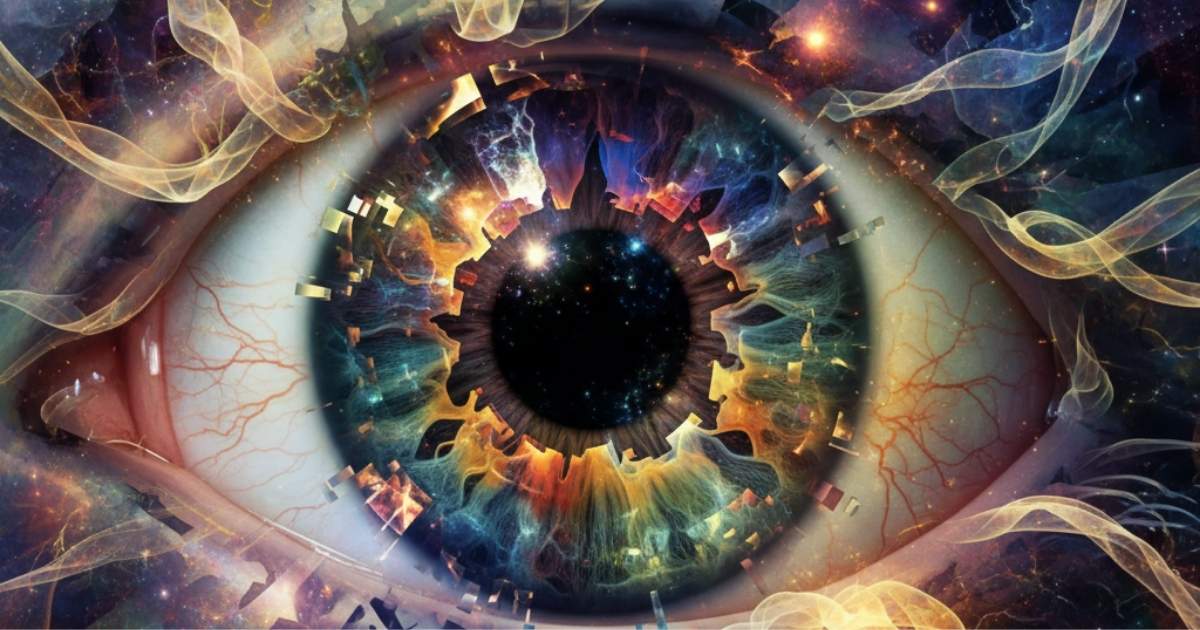The abstract image of an eye, bursting with celestial colors and intricate patterns, transcends a simple anatomical representation to become a profound symbol of the universe within and without. This captivating artwork invites viewers to ponder the nature of perception, the vastness of the cosmos, and the intricate connection between the observer and the observed.
At first glance, the eye itself is instantly recognizable, yet it is far from ordinary. The iris, instead of its usual single hue, explodes with a kaleidoscopic blend of blues, purples, oranges, and golds, reminiscent of nebulae and distant galaxies. This cosmic swirl within the eye’s center suggests that our perception is not merely a passive reception of light, but an active, internal process that can mirror the grandeur of the universe. It hints at the idea that what we see is often a reflection of our inner world and the incredible complexity of the human mind.
The pupil, often described as the window to the soul, here appears as a deep, black void, speckled with stars. This evokes a sense of infinite depth, suggesting that within each individual lies a universe of thought, emotion, and potential. It can also be interpreted as the point of entry for cosmic information, where the vastness of space converges into the focused point of individual consciousness. The stars within the pupil further emphasize the idea that our personal experiences and observations are intrinsically linked to the larger cosmic tapestry.
Surrounding the eye, ethereal, wispy forms in shades of gold and amber drift like cosmic currents or trails of stardust. These elements add a dynamic sense of movement and energy to the image. They could represent the flow of information, the elusive nature of thought, or even the subtle energies that connect all things. These forms create a bridge between the distinct structure of the eye and the more nebulous, abstract background, further blurring the lines between the tangible and the intangible.
The background itself is a fragmented mosaic of cosmic scenes – swirling galaxies, starlit expanses, and vibrant energy fields. This fragmented nature suggests that our understanding of the universe, and indeed of ourselves, is often piecemeal and constantly evolving. It implies that reality is not a singular, fixed entity but a dynamic interplay of countless elements, constantly shifting and revealing new perspectives.
Ultimately, this abstract eye serves as a powerful reminder of the profound relationship between human consciousness and the universe. It encourages us to look beyond the surface, to recognize the cosmic dance within our own perception, and to marvel at the infinite wonders that unfold both in the vastness of space and in the depths of our own minds. It’s an invitation to see, not just with our eyes, but with our entire being, embracing the abstract and interconnected nature of existence.

